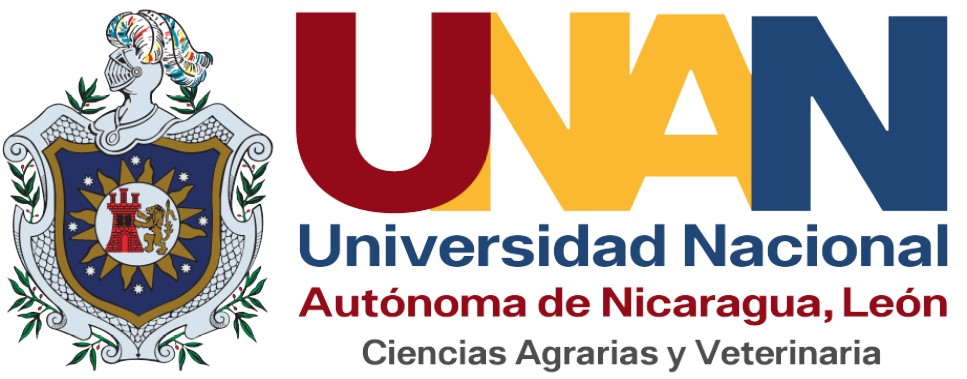Modelos de impacto en la agricultura teniendo en cuenta los escenarios de la agricultura del cambio climático
DOI:
https://doi.org/10.5377/ribcc.v1i1.2140Palabras clave:
Cambio Climatico, Modelos de analisis, Modelos empiricosResumen
La presente reseña o recopilación de estudios realizados en Cuba y Nicaragua, tiene como propósito examinar, los impactos potenciales del cambio climático sobre el sector agropecuario mediante el uso de la modelación, con el fin de brindar elementos que puedan tomarse en cuenta para la formulación de políticas agropecuarias y ambientales, ya que conocer los posibles impactos del cambio climático, es un primer paso hacia la acción eficaz. Se analizan los posibles impactos de las variaciones de las variables climáticas sobre el sector agropecuario, sobre algunos de los cultivos más importantes. Asimismo se contabilizan los impactos económicos a través escenarios climáticos futuros. El estudio en el sector de agricultura arrojó una amplia gama de resultados que abarcan tanto consecuencias perjudiciales como beneficiosas, en función de que los niveles del efecto de fertilización por CO2 (estimados en los laboratorios) se alcancen en la práctica para las plantas de ciclo fotosintético C3.
Descargas
Métricas
Citas
Adams Richard, Hurd B. Reailly J. (1999), "A review of impacts to U.S. agricultural resources", prepared for the Pew Center on Global Climate Change. Amador, Martín (2000), "Evaluación del posible cambio climático sobre el rendimiento potencial del cultivo de la soya en la región central", Trabajo de Diploma, Universidad Nacional Agraria, Managua.
Baker, B. B. y otros (1993), "The potential effects of climate change on ecosystem processes and cattle production on US Rangelands", Climatic Change, 23: 97-117. Banco Central de Nicaragua (2009), Indicadores económicos mensuales, junio.
https://doi.org/10.1007/BF01661200
Canales R. y M. Cervantes (2008), Nicaragua: Análisis del Impacto de los Servicios de Infraestructura y las Condiciones de Vida en las Zonas Rurales. Proyecto de Cooperación CEPAL/BID/IFPRI. CEPAL (Comisión Económica para América Latina y el Caribe) (2009), Anuario Estadístico de América Latina y el Caribe, 2008.
______ (2009), Balance preliminar de las economías de América Latina y el Caribe, 2008.
______ (2009), Preliminary overview of the Caribbean, 2008-2009(LC/CAR/L.189), marzo.
______ (2009), Anexos Estadísticos, de los Estudio Económicos de Nicaragua.
______ (2008), Economic Survey of the Caribbean, 2007-2008 (LC/CAR/L.173), julio.
Darwin, R., M. Tsigas, J. Lewandrowski y A. Raneses (1995), "World agriculture and climate change. Economic adaptations, Agricultural Economic Report No. 703, Washington: US Department of Agriculture, Economic Research Service, junio. FAO (2003a), World Agriculture: Towards 2015/2030. A FAO Perspective, Roma.
______ (2003b), The digital soil map of the world (DSMW) CD-ROM, Food and Agriculture Organization, Roma. Fleischer, A. I. Lichtman y R. Mendelsohn (2007), "Climate change, irrigation, and Israeli agriculture: Will warming be harmful?", Policy Research Working Paper, No. 4135,
Banco Mundial. Harmeling, Sven (2008), "Global climate risk index 2009 weather-related loss events and their impacts on countries in 2007 and in a long-term comparison", publisher: Germanwatch e.V., diciembre. INEC (Instituto Nacional de Estadística y Censos) (2009), Encuesta de Empleo, Nicaragua. Klinedinst, P. L. y otros (1993), "The potential effects of climate change on summer season dairy cattle milk production and reproduction", Climatic Change, 23(1): 21-36.
https://doi.org/10.1007/BF01092679
MAGFOR (Ministerio Agropecuario y Forestal) (2009), Encuesta Nacional Agropecuaria 2008.
______ (2008), Información estadística anual de producción agropecuaria (Ciclo agrícola 2006/2007 y período pecuario 2008), Nicaragua.
MARENA (Ministerio del Ambiente y los Recursos Naturales), "Evaluación de la Vulnerabilidad Futura de los sistemas: Clima, Socioeconómico y Recursos Hídricos ante el Cambio Climático en la Cuenca No. 64" Proyecto: "Fomento de las Capacidades para la Etapa II de Adaptación al Cambio Climático en Centroamérica, México y Cuba" (PAN 10-00014290), 2007.
______ (2003), Plan de Acción Nacional ante el Cambio Climático, Nicaragua.
______ (2007), Naturalmente Unidos frente al Cambio Climático. Nicaragua.McCarl, B., R. Adams y B. Hurd (2001), Global Climate Change and its Impact on Agriculture, inédito. Mendelsohn, R., W. Nordhaus y D. Shaw (1994), "The impact of global warming on agriculture: A Ricardian analysis", American Economic Review, 84:753-771.
Mendelsohn, R., A. Dinar y A. Sanghi (2001), "The effect of development on the climate sensitivity of agriculture", Environment and Development Economics, 6:85-101. Mendelsohn, R. y S. N. Seo (2007), Changing Farm Types and Irrigation as an Adaptation to Climate Change in Latin American Agriculture. World Bank Policy Research Series Working Paper, No. 4161, Banco Mundial, Washington, D. C.
https://doi.org/10.1596/1813-9450-4161
Molua, E. y C. Lambi (2007), The Economic Impact of Climate Change on Agriculture in Cameroon, World Bank Policy Research Working Paper, No. 4364, Banco Mundial, Washington, D. C.
https://doi.org/10.1596/1813-9450-4364
PNUMA y UNFCCC (2004), Carpeta de Información sobre el cambio climático, octubre. Rivas, Carlos (2000), "Evaluación del posible cambio climático sobre el rendimiento potencial del cultivo del maíz (Zea Mays L.), en la región central de Nicaragua", Trabajo de Diploma, Universidad Nacional Agraria, Managua.
Rivera, Isaac (2000), "Evaluación del posible cambio climático sobre el rendimiento potencial del cultivo del frijol en la región pacífico", Trabajo de Diploma, Universidad Nacional Agraria, Managua.
Schimmelpfennig, D., y otros (1996), Agricultural Adaptation to Climate Change: Issues of Long Run Sustainability, U. S. Department of Agriculture, Natural Resources and Environment Division, Economic Research Service, Washington, D. C.
Seo, S. N. y R. Mendelsohn (2008a), A Ricardian Analysis of the Impact of Climate Change on Latin American Farms, World Bank Policy Research Series Working Paper, No. 4163, Washington, D. C.
https://doi.org/10.1596/1813-9450-4163
______ (2008b), "A Ricardian analysis of the impact of climate change on South American Farms, Chilean Journal of Agricultural Research, 68(1): 69-79.
https://doi.org/10.4067/S0718-58392008000100007
Sergendon Kathleen, B. L. Dixon (1998), "Climate Change and agriculture: The role of farmer adaptation" Chapter 3, the Economics of Climate Change, R. Mendelsohn y J. Neumann, eds., Cambridge University Press, Cambridge.
Verbeek, Marno (2005), "A guide to modern ecoinometrics, Inglaterra, John Wiley & Sons Ltd.
Bouman B.A.M., H. Van Keulen, H.H. van Laar and R. Rabbinge. 1996. The School of de Wit crop growth simulation models: a pedigree and historical overview. Agricultural System, 52(2-3):171-198.
https://doi.org/10.1016/0308-521X(96)00011-X
Cole, C.V., K. Paustian, E.T. Elliot, A.K. Metherell, D.S. Ojiva and W.J. Parton. (1993). Analysis of agroecosystem carbon pools. Water, Air and Soil Polution, 70:357-371.
https://doi.org/10.1007/978-94-011-1982-5_23
Hoogenboom, G. 2000. "The state of the art in crop modeling". In Sivakumar, M.V.K. (Ed.). (2000). Climate Prediction and Agriculture. Proceedings of the START/WMO International Workshop held in Geneva, Switzerland, 27-29 September 1999. Washington DC, USA: International START Secretariat, Pp 69-75.
Hoogenboom, G., P.W. Wilkens, and G.Y. Tsuji [Editors]. (1999). DSSAT v3 Volume 4. University of Hawaii, Honolulu, Hawaii. 286 p.
Jones, C.A., P.T. Dyke, J.R. Williams, J.R. Kiniry, V.W. Benson, and R.H. Griggs. (1991). EPIC: An operational model for evaluation of agricultural sustainability. Agricultural System, 37:341-350.
https://doi.org/10.1016/0308-521X(91)90057-H
Keathing, B.A., G.L. Hammer, P.S. Carberry, D.M. Freebairn, H.M. Meinke and R.L. McCown. (1997). APSIM?s contribution to the simulation of agricultural system. Agronomy Abstracts, (1997):21.
Kropff, M.J., H.H. van Laar and R. Mattheus. (1994). ORYZA1, An ecophysiological model for irrigation rice production. SARP Research Proceedings. DLO Research Institute for Agrobiology and Soil Fertility, Wageningen, The Netherlands. 110 p. McCown, R.L., G.L. Hammer, J.N.G.
Hargreaves, D.P. Holzworth and D.M. Freebairn. (1996). APSIM: a novel software system for model development, model testing and simulation in agricultural systems research. Agricultural System, 50:255-271.
https://doi.org/10.1016/0308-521X(94)00055-V
Meinke, H., G.L. Hammer and R. Selvaraju. (2000). Using seasonal climate forecast in agriculture - the Australian experience. In Sivakumar, M.V.K. (Ed.). 2000. Climate Prediction and Agriculture. Proceedings of the START/WMO International Workshop held in Geneva, Switzerland, 27-29 September 1999. Washington DC, USA: International START Secretariat, Pp 195-213.
Penning de Vries, F.W.T., D.M. Jansen, H.F.M. ten Berge and A. Bakema. (1989). Simulation of ecophysiological processes of growth of several annual crops. Simulation Monographs. Centre for Agricultural Publishing and Documentation (Pudos). Wageningen, The Netherlands.
Tsuji, G.Y., G. Hoogenboom and P.K. Thornton (Ed). (1998). Underestanding options for agricultural production. Kluwer, Dordrecht, The Netherlands.
Publicado
Cómo citar
Número
Sección
Categorías
Licencia
Derechos de autor 2015 Revista Iberoamericana de Bioeconomía y Cambio Climático

Esta obra está bajo una licencia internacional Creative Commons Atribución-NoComercial-CompartirIgual 4.0.
Copyright © 2025 Rev. iberoam. bioecon. cambio clim. Universidad Nacional Autónoma de Nicaragua León (UNAN-León), Area de Conocimiento de Ciencias Agrarias y Veterinarias/ Area Especifica de Agroecología y agronegocios /Centro de Investigación Ciencias Agrarias y Veterinarias. Dirección Académica. Departamento de Investigaçión. Unidad de publicaciones y eventos cientificos.












 EDITORIAL
EDITORIAL  e-ISSN
e-ISSN


 COPYRIGHT
COPYRIGHT  Este trabajo está licenciado bajo una Licencia Internacional
Este trabajo está licenciado bajo una Licencia Internacional 












